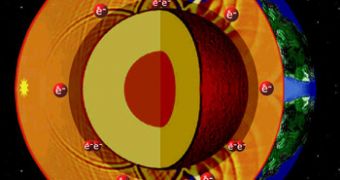Recently, a team of researchers have been able to recreate the extreme conditions of pressure and temperature found inside our planet to understand how it is forming and evolving. The exotic high pressure inner world may be a window to understand a variety of problems in planetary science.
In a workshop entitled Synergy of 21st Century High-Pressure Science and Technology sponsored by the Carnegie/DOE Alliance Center and organized by Carnegie's Geophysical Laboratory scientists Ho-kwang (Dave) Mao and Russell J. Hemley, the two discussed many phenomena encountered deep within the Earth.
"There is a rich history surrounding certain fundamental questions, such as how materials deep within the Earth rise as plumes, and what happens happened to plates as they push against each other and dive below others to great depths," explained Hemley. "But it's just recently that we've been able both to produce the ultrahigh pressures found in the deep Earth and to harness tools that can measure the changes in matter in this extreme environment."
In such extreme conditions, the materials and chemicals found under a planet's crust suffer profound alterations. The paper presents many of the internal mechanisms of our planet, which could also apply to extrasolar planets with similar compositions.
Deep earhquakes, micro- to nanometer-size minerals and many more could be applied to study the even higher pressures and temperature of the interiors of giant planets, such as Jupiter and even Earth-like planets from other regions of space and how lifeforms could be influenced by the underground conditions.
For instance, scientists have recently presented surprising findings about an elusive zone nearly 1,800 miles below the surface near the planet's core, called the D'' layer, along with seismological and mineral data.
Even though the paper focuses on the Earth and planetary sciences, it's also contributing to our understanding of the planets outside our solar system and revealing how life may have originated.

 14 DAY TRIAL //
14 DAY TRIAL //